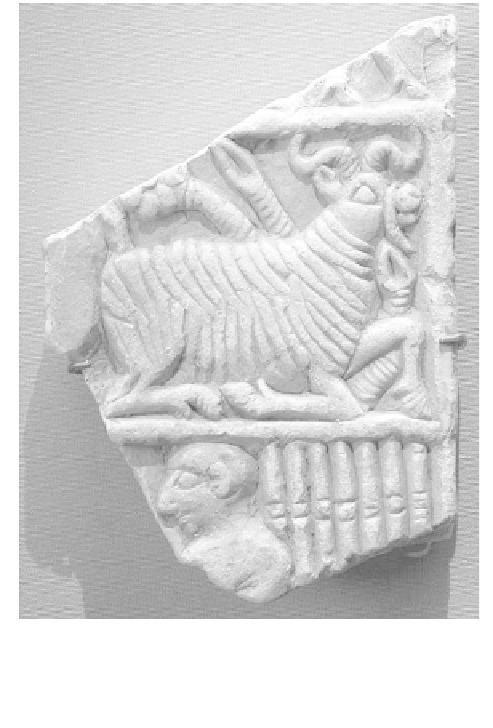Agriculture Reference
In-Depth Information
during a rainless summer or cold winter, systems developed
whereby the pasture biomass was harvested, dried, and
stored for feed to be used during the time of scarcity, at
which time the animals were often kept in confinement.
Such pasture systems are still very common today all
over the world. Many agricultural universities and colleges
have entire departments and programs devoted to the study
of pasture design, management, and improvement, espe-
cially where animal production systems are most prevalent.
M
IXED
C
ROP
-L
IVESTOCK
S
YSTEMS
While the coevolution of animals and forage plants was
taking place, humans in some parts of the world were also
developing crops for their own consumption. Animals
were nearly always part of this crop development, since
they provided the cultivation and transport power, as well
as manures for fertilization of crops, and played a part in
the diversification of farm landscapes that must have come
about as humans balanced the needs of themselves, their
animals, and the environment upon which both depended.
All early agricultural societies employed domesticated
animals to some extent. Ancient cultures in the Indus
Valley domesticated the chicken. The cultures of South-
east Asia raised fowl and water buffalo. In Mesopotamia,
cattle, sheep, and goats were important. Even in the New
World, where domesticable wild species were less abun-
dant, domesticated animals such as the turkey and hairless
dog played important roles in agricultural societies. The
Anasazi of the American Southwest, for example, grew
corn, beans, and squash, but raised domesticated turkeys
for feathers, emergency food, and fertilizer (Figure 19.6).
The degree of integration of plants and animals varied
in early agricultural systems. In some societies, crop
production systems developed alongside livestock pasture
systems; in other cases, food derived from animal domes-
ticates supplemented a crop-based system. Either way, the
pattern was set for integrated crop-livestock systems to
develop along with the major centers of human civilization.
These integrated systems involved a diverse mixture
of different activities, managed together as a working
whole to take advantage of the ecological complementa-
rity of each component or enterprise. In many temperate
parts of the world with adequate rainfall, including the
Middle East, Europe, northern Africa, and southern Asia,
integrated systems reached a level of considerable com-
plexity. In early modern Europe, for example, a typical
integrated farm had pasture for harvestable feed or forage
(annual and perennial), crops (annuals and perennials),
animal grazing areas (with some possible improvement
in plant species used as forage), corrals, forest or woodlot,
often some sort of wetland, stream or well, and places
for human habitation and activity, along with rotations
and fallows involving multiple combinations of each
component.
FIGURE 19.6
Domesticated sheep in ancient Mesopotamia.
Domesticated animals, such as the sheep depicted on this frag-
ment of a stone carving in The Louvre, were important in the
early form of agriculture practiced in the “fertile crescent.”
This style of integrated farm — and the associated
cultural values of animal husbandry — was imported to
the U.S., where it became the model system. Until the
beginning of the 20
th
Century, most farms in the U.S.
showed this integration of multiple enterprises. Integrated
farms still exist today, but they are greatly outnumbered
by specialized and industrial-scale operations that com-
pletely separate livestock and crop production.
The disintegration of livestock and crops came about
with the widespread introduction of specialized machin-
ery, fertilizers, and pesticides following World War II,
but specialization in U.S. agriculture began many
decades before that (Gregson, 1996). In order to respond
to uniform market signals and distant markets, farmers
began to rely on production inputs that had the effect of
standardizing both growing conditions and response to
management and climate. Diversity seemed to be less
necessary, and farms began to simplify. Ready access to
effective and cheap chemical fertilizers encouraged the
perception that farmers no longer had to depend on bio-
logical nitrogen fixation and nutrient recycling through
livestock to maintain soil health. Government support
programs and academic research institutions further
promoted the value of specialization, and by the end of
the 1980s, the separation of livestock and crops was
fairly complete (Gregson, 1996).

Search WWH ::

Custom Search